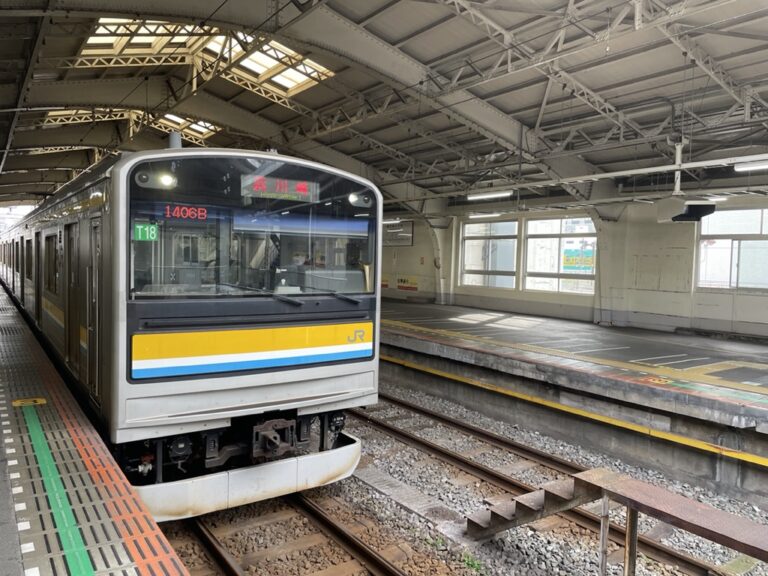Tsurumi-ku is a distinctive area of Yokohama with a cosmopolitan identity. There are as many foreign residents as in Naka-ku, from Brazil, Myanmar, and the Philippines, not to mention a long-established and vibrant Okinawan community. It has its own bus system and train line. The Tsurumi Line follows a complex route, trifurcating through the coastal industrial zones along Tōkyō Bay, with Umi-Shibaura Station mere inches from the water. Another station, Kokudō, is a favorite for urban photographers, with a mid-Shōwa retro atmosphere.
The Tsurumi Line is now the scene of an ambitious project designed to free Japan from fossil fuel dependence, leading to net zero emissions by 2050. A bold collaboration amongst JR East, Toyota, and Hitachi is underway to power trains with hybrid fuel cell engines rather than overhead electrical cables or diesel fuel. This innovation is dubbed HYBARI, playing on the Japanese word for skylark.
Carriages have no pantograph; instead, tanks containing 40 kg of hydrogen are mounted on the roof. Through combination with oxygen from the atmosphere, fuel cells generate 240 kWh of electricity per carriage. Batteries under each carriage store electricity from braking friction, which is used for lighting and temperature control. The only emission is water.
HYBARI is still in the experimental stage, with completion planned by 2030. Due to the flammability of hydrogen, special permission was required for a test track in a residential area. The low population density along the Tsurumi Line made it an ideal location. As we commemorate the 150 years since Japan’s first railway opened between Sakuragi-chō and Shimbashi, 2022 is a good year to visit Tsurumi and spot the trains of the future.


